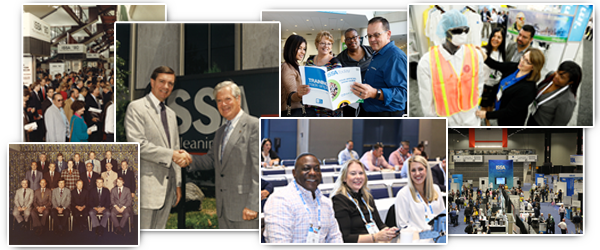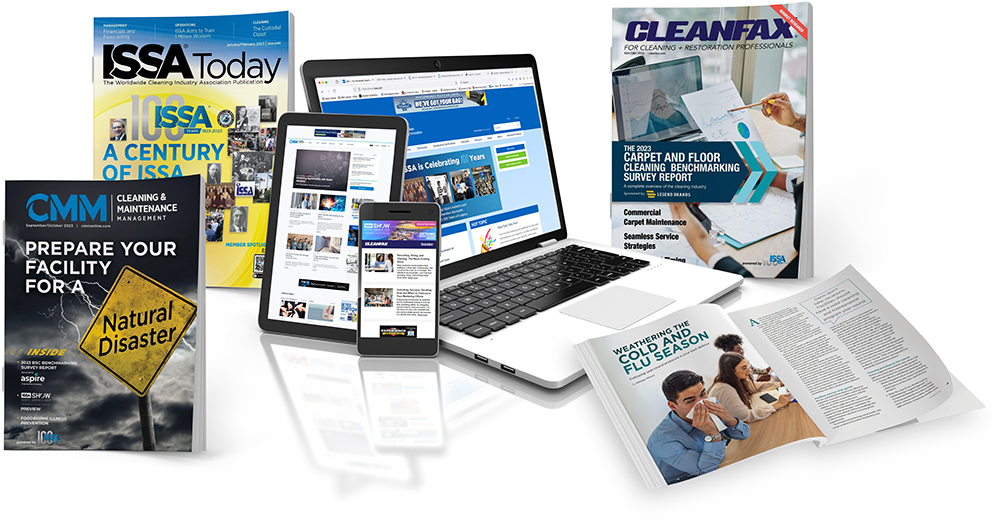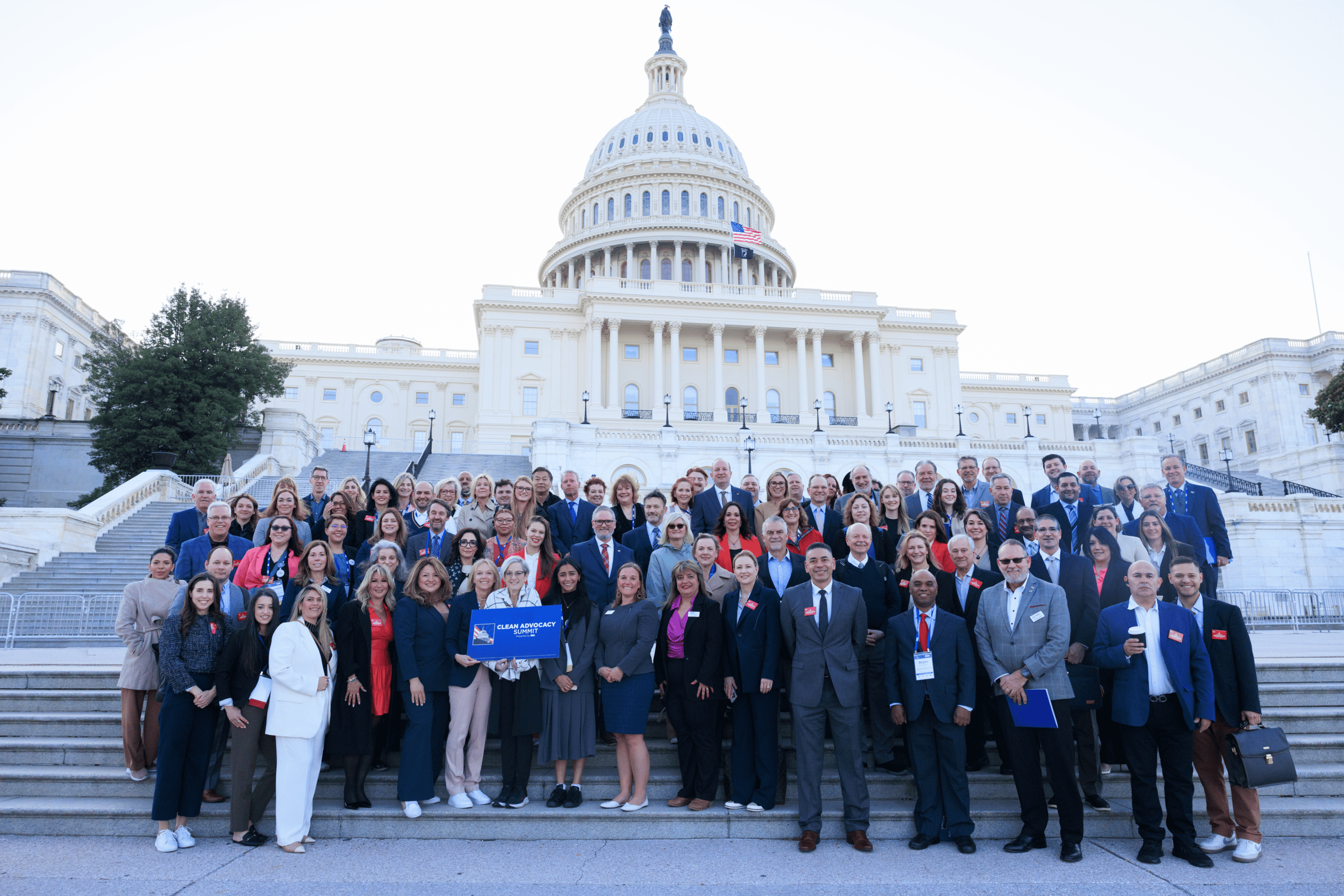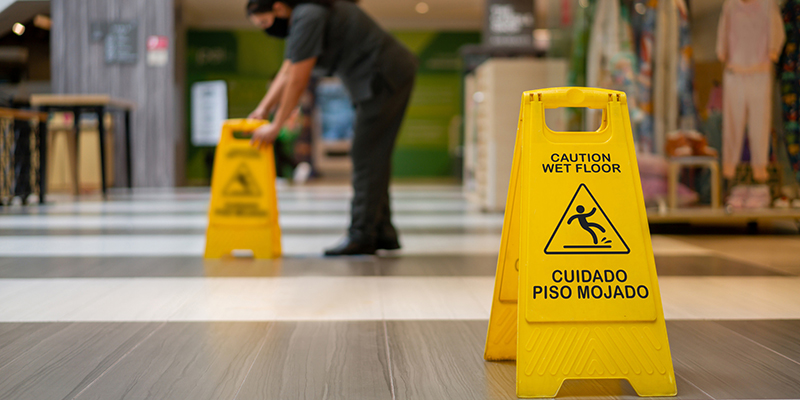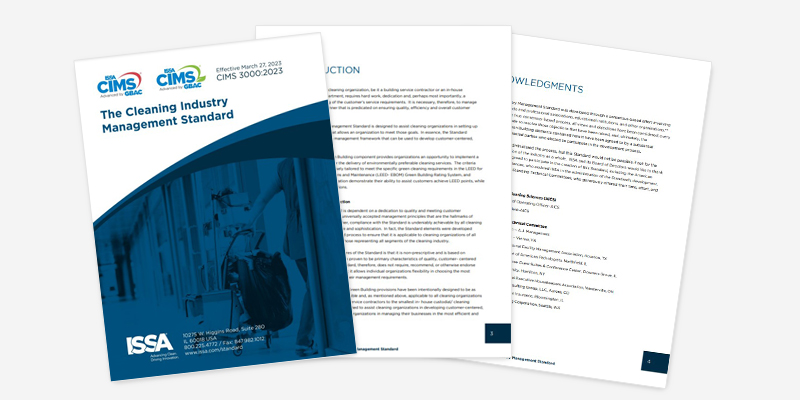The 3 P’s of Advocacy

In an industry where front-line workers scrub, sanitize, and safeguard public health every day, policy decisions made far from the job site can have significant consequences. That’s why advocacy—once considered the realm of political insiders—has become a growing focus for leaders in the cleaning and facility services sector.
This message was at the heart of a recent ISSA video program hosted by ISSA’s media director, Jeff Cross, featuring two seasoned advocates: Keith Schneringer, senior director of marketing of JanSan + Sustainability at BradyPLUS, and Rebecca Kaufold, manager of Government Affairs and Sustainability at Spartan Chemical Company. Together, they offered a behind-the-scenes look at how the cleaning industry is working to influence legislation that impacts the people who keep our environments safe.
Reason for advocacy: People
While policy can be complex, Schneringer and Kaufold agreed that the purpose behind advocacy is simple: It’s about people.
During ISSA’s recent Clean Advocacy Summit in Washington, D.C., Cross recalled a moment that encapsulated the human side of the mission. As a group of advocates prepared for meetings on Capitol Hill, they encountered Justine, a custodian on duty in the building. “She was heading toward the restrooms with her cart,” said Cross. “At first, she wasn’t sure why we stopped her. But when we explained the work we were doing to support workers like her, her whole demeanor changed. She was smiling, excited—even proud.”
That moment also stuck with Kaufold. “Justine represents why we do this,” she said. “She was proud that someone noticed her contribution and was fighting to improve her workplace and protect her health.”
For Schneringer, this personal connection is a vital part of advocacy. “We can’t clean buildings without people. And to support them, we need to advocate for better training, better tools, and smarter policy,” he said.
Advocacy for safer products
As a manufacturer, Spartan Chemical is deeply committed to regulatory compliance, encompassing labeling and registration, product claims, and hazard communication. Kaufold explained that one of their key advocacy focuses is the Pesticide Registration Improvement Act (PRIA), which ensures that the Environmental Protection Agency (EPA) has the necessary resources to review new disinfectants and antimicrobials promptly and responsibly.
Manufacturers, like Spartan, pay fees to the EPA for review of their products, Kaufold said. “PRIA ensures that those fees are matched with the proper oversight and staff to do the reviews. That affects not just manufacturers like us, but the entire chain—distributors, cleaning professionals, and the people occupying those buildings.”
She added, “It’s not just about compliance. It’s about protecting workers who use these products daily and ensuring they’re using something safe, effective, and approved.”
Schneringer echoed the importance of product stewardship in advocacy efforts. “At BradyPLUS, we represent great manufacturers like Spartan. Our job is to help customers use these products correctly—through training, support, and ongoing education,” he said.
Proper training: The overlooked third ‘P’
Rounding out what the trio dubbed “the three Ps”—people, products, and proper training—is the need for workforce development. Schneringer highlighted one bill in particular: The Freedom to Invest in Tomorrow’s Workforce Act. This bipartisan initiative would enable workers to utilize 529 education savings plans for trade certifications and job training, including roles such as janitorial and sanitation.
“Not everyone goes to college,” Schneringer noted. “We’re advocating to expand those 529 funds so cleaning professionals can access quality training tax-free. That means better jobs, higher wages, and upward mobility.”
He explained the importance of making the issue local and personal when talking with lawmakers. “You hook them by showing how it affects their district. Then you draw the line to the people impacted—John Smith was trained, got certified, and now earns more money. That makes it easy for them to say yes.”
Building trust, one visit at a time
Contrary to popular belief, these advocacy visits aren’t one-off events or cold introductions. Kaufold emphasized that successful advocacy requires sustained relationships. “Hill Day is one day. Building relationships happens all year,” she said. “You work with staffers in Washington and your local district. That way, when issues arise, they know who to call—and they know you’re serious.”
She described a recent moment that demonstrated how real change can happen quickly. “We asked one Ohio senator to support PRIA funding. That same day, he drafted a letter and secured the signature of the other Ohio senator. It was a bipartisan effort, and it happened because we were there, in person, making the case.”
Schneringer added that policymakers are more accessible than many assume. “These are people doing the people’s work. But they’re often influenced by whoever’s in their ear. If it’s not us, it’ll be someone else. We need to speak up.”
Prepare, present, and make it stick
What does a typical advocacy visit look like? Kaufold broke it down: “Usually, you have a small group—three or four people—each covering different talking points. You introduce yourself, explain the issue, and share how it affects their district. The goal is connection, not confrontation.”
Schneringer emphasized the importance of being concise and compelling. “You’ve got 30 minutes. Be brief, be brilliant, be gone,” he said with a laugh. “Start with the hook—why it matters locally. Deliver the line—how it helps real people. Then, the sinker—make it easy for them to support. That’s the formula.”
What advocacy success looks like
While not every request results in immediate legislation, advocacy wins come in many forms. “Success could be increased awareness, a co-sponsorship, or even just a commitment to further conversation,” said Kaufold. “But the ultimate goal is better policy—something that solves a real problem, is easy to comply with, and levels the playing field.”
She described her favorite kind of bill: “Good policy addresses a real issue, isn’t overly burdensome, and has some mechanism to ensure fairness. When we see that, we know we’re on the right track.”
A call to the industry
Both Schneringer and Kaufold issued a clear call to action for industry professionals watching the program: Get involved!
What is on Schneringer’s wish list? “Support ISSA’s advocacy efforts. If you’re a member, use your voice. Better yet, send someone from your organization to participate in it. Imagine a thousand of us showing up on the Hill with ‘Advocate for Clean’ buttons. That would send a powerful message.”
Kaufold agreed, emphasizing how advocacy impacts not just manufacturers but the entire supply chain. “These policies affect our customers—building service contractors, schools, hospitals. We can be their voice. But it’s even more powerful when they join us.”
Help shape regulation
From Capitol Hill to custodial closets, advocacy isn’t just about politics—it’s about people. And as Kaufold and Schneringer demonstrated, meaningful change begins when industry leaders step forward, speak up, and show lawmakers what clean really means.
Both Kaufold and Schneringer summed it up: In today’s world of regulation and complexity, following the rules isn’t enough. We need to shape them.
And that starts with being present, being prepared, and making the case—for our people, our products, and the future of our profession.
Sidebar
BONUS VIDEO CONTENT: issa.com/3-Ps



